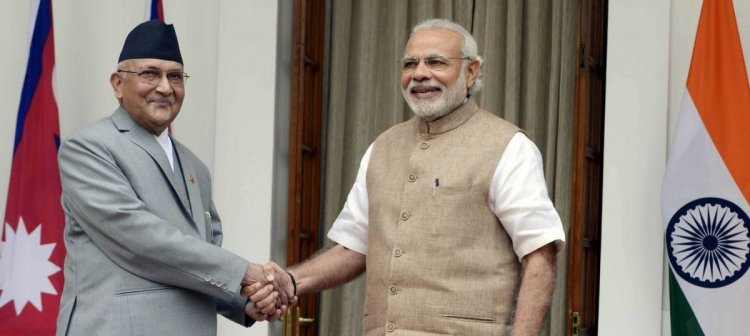India - Nepal: Back to a Communist Alliance
STORIES, ANALYSES, EXPERT VIEWS

On March 4, Pushpa Kamal Dahal ‘Prachanda’ abruptly ditched the Nepali Congress, his key coalition partner, and joined hands with the Communist Party of Nepal (Unified Marxist-Leninist), or UML. The Nepali Congress is the largest party in the 275-member parliament with 88 seats. With the formation of a new Cabinet under Prachanda, also the chairman of the Communist Party of Nepal (Maoist Centre), a communist-dominated dispensation is back in Kathmandu.
While the abrupt collapse of the Maoist-Congress coalition took many by surprise, Sanjeev Satgainya (Journalist, Former Editor, The Kathmandu Post) writes “signs of cracks in the alliance were visible for some time….As the blame-game continues, Nepal is witnessing the rise of a Maoist-UML coalition for the second time in recent years; earlier in 2018, the same parties had come together and even merged, only to last three years before imploding.”
Analysts see the formation of the communist coalition in Kathmandu more inspired by self-interest — of Prachanda and UML chair K.P. Sharma Oli — than ideology.
It may be recalled that when Prachanda visited China in September last year, he was keen on extracting some projects under the Belt and Road Initiative (BRI), Beijing’s flagship infrastructure project spanning across Asia and Europe. Nepal signed up to the BRI in 2017, but not a single project has taken off under the scheme.
Advantage China
China, writes Maj Gen Ashok K Mehta Retd. (Military Commentator) “has made no secret of its intent to recreate the Left alliance. Prachanda, though, has steered the ship deftly, balancing China with India. Nepal has been unhappy with China over the Belt and Road Initiative, especially after Beijing failed to implement any of the projects signed seven years ago….Many Nepalese are not happy with China, especially its ‘wolf warrior’ diplomacy and bullying over the ‘One China’ policy and Tibet policy. Corruption by Chinese companies in the construction of Pokhara International Airport and alleged Chinese encroachment along the northern borders led to protests last month in Kathmandu. Some Chinese nationals are accused in the gold smuggling case in Kathmandu. Chinese projects are white elephants, just like the Chinese-constructed Matale airport and Hambantota sea port in Sri Lanka, which were guaranteed to lead to a debt trap.”
India not way behind; on the right track
India, on the contrary, writes the former General “is on the right track in Nepal, focusing on development, connectivity and hydel projects. India built a petroleum pipeline from Motihari in Bihar to Amlekhgunj in Nepal. New Delhi provides gas and fuel to Nepal…..The preliminary report on India’s rail project to Kathmandu was submitted to Nepal two years ago; only the method of funding remains to be resolved as Kathmandu wants the Indian grant. The Chinese rail project from Kirung to Kathmandu has become a chimera, like the sundry trade and transit projects signed by the Oli government in 2016. India’s great cooperation with Nepal is in the hydropower sector. Soon, Nepal will be self-sufficient in electricity and is already selling power to India. During Prachanda’s visit to Delhi last June, it was agreed that Nepal will be able to sell us 10,000 MW in the next 10 years. This will help reduce its trade deficit.”
Prachanda meanwhile “has strived for Nepal to become a bridge between two major economies. It is early days for the new coalition; last year, Prachanda had joined the Nepali Congress-majority Democratic Alliance. There is no clarity on the new power-sharing arrangement between Prachanda and Oli. He can still do to Oli what the latter did to him in 2018. In the neighbourhood’s great game, after the Maldives and Nepal, it is advantage China.”
















